10 must-see UNESCO World Heritage Sites in eastern Germany

Although the former GDR may not be first on everyone's list for exciting tourist destinations, these UNESCO World Heritage sites in the former East will make you think twice before planning that next getaway.
1. The Palaces and Parks of Potsdam
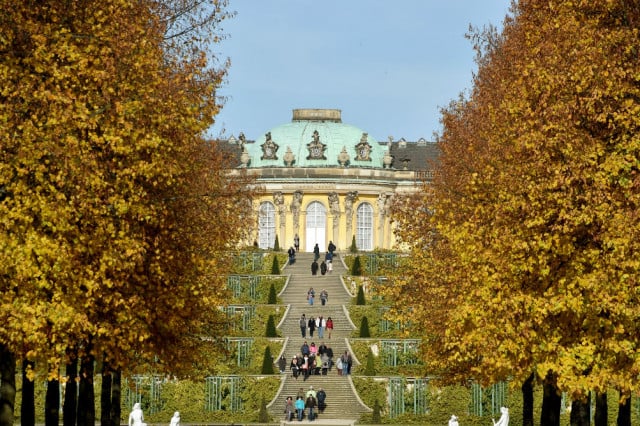
Sanssouci Palace in Potsdam in autumn. Photo:DPA
The parks and palaces of Brandenburg’s capital have been protected by UNESCO since 1990. Perfect for a day trip from Berlin, Potsdam is home to great examples of the baroque architecture which the Prussian royals enjoyed during the 18th century.
Sanssouci Palace is the resting place of Prussian king Frederick the Great and was his solace away from the busy streets of Berlin. Other sites protected by UNESCO in this charming city are Schloss Glienicke and the Russian settlement just north of the town centre.
Read more about the city of Potsdam here.
2. The old town of Quedlinburg
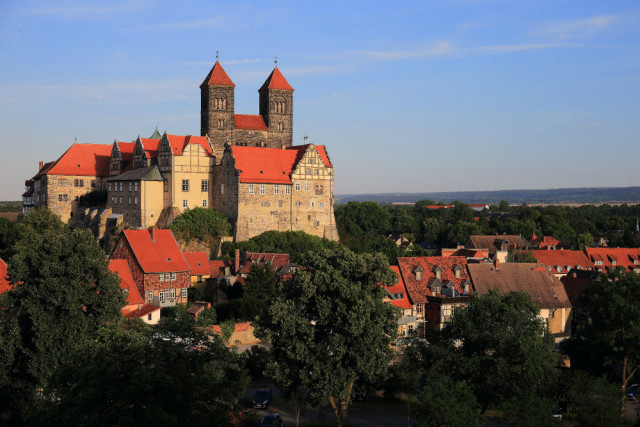
Quedlinburg old town. Photo:DPA
The church, castle and historic centre of this sleepy town situated north of the Harz mountains of Saxony-Anhalt make up another UNESCO World Heritage site.
The town itself is brimming with medieval history and has been called the “cradle of the German Reich." Back in 922 AD legend has it that King Henry the Fowler was offered the throne of Germany in this very spot.
Quedlinburg’s national significance did not end there though. Under the Nazis, the town’s church and castle became shrines to the party. Heinrich Himmler led a cult-like following of Henry I, who he called the “most German of all German”.
In the shadow of the Harz mountains, the Nazis tried to create a new religion to worship the medieval king, but ultimately failed. The church was closed from 1938 and throughout the war until liberation.
Today the story of this old town is being told to visitors and the historic sites will remain standing and protected by UNESCO for the foreseeable future.
3. Bauhau sites in Weimar, Dessau and Bernau
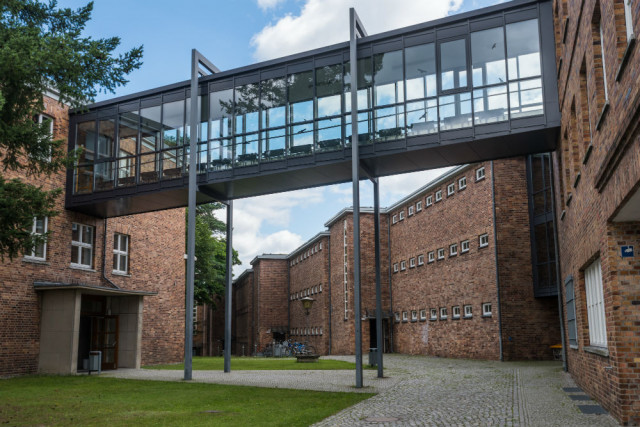
An original Bauhaus site in Dessau. Photo:DPA
In 1919 the city of Weimar in Thuringia gave birth to an architectural movement which spread throughout the world: Bauhaus.
Originally the name of an academy for applied arts, design and architecture in Weimar founded by architect Walter Gropius, affiliate schools were later set up in Dessau and Berlin.
The sites of these schools are now protected by UNESCO who hope to preserve the building movements of the 20th century.
4. Memorials to Martin Luther in Eisleben and Wittenberg
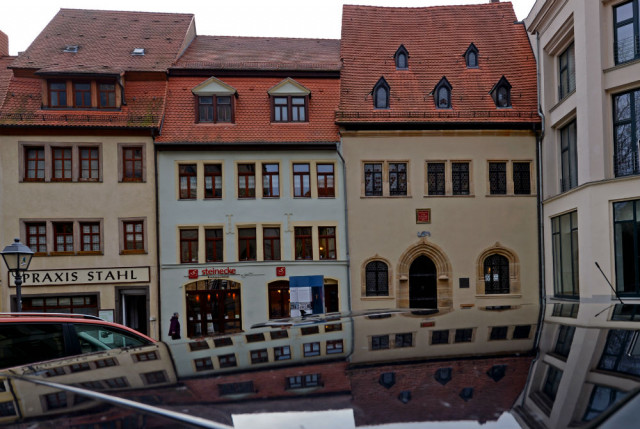
The house where Martin Luther died in Eisleben. Photo:DPA
The towns of Eisleben and Wittenberg in Saxony-Anhalt are home to several memorials to Martin Luther which are preserved by UNESCO. Martin Luther was born in Eisleben in 1483, and also preached his last sermon and died there in 1546.
As far back as the year 1689 town-dwellers took steps to preserve its Luther memorials and became pioneers of “heritage tourism”. Luther’s “birth house” and “death house” are both protected heritage sites in the town.
Luther spent the majority of his life in another Saxony-Anhalt town: Wittenberg. Here the Augustinian monastery where he spent time as a monk and where he then lived with his wife and family is a protected site.
5. Classical Weimar
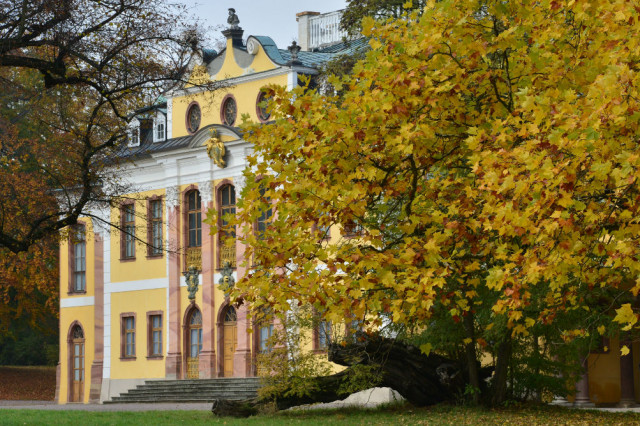
Schloss Belvedere in Weimar. Photo:DPA
Multiple structures are protected in the city of Weimar in Thuringia which relate to Weimar Classicism. This was a literary and culture movement which lasted from 1772 to 1805 and saw the rise of literary greats Johann Wolfgang von Goethe and Friedrich Schiller.
Buildings that make up the heritage site include the houses of Goethe and Schiller, just a three-minute walk from each other, and Weimar Palace and Schloss Belvedere, a two-story baroque palace on the outskirts of the city.
6. Museum Island in Berlin
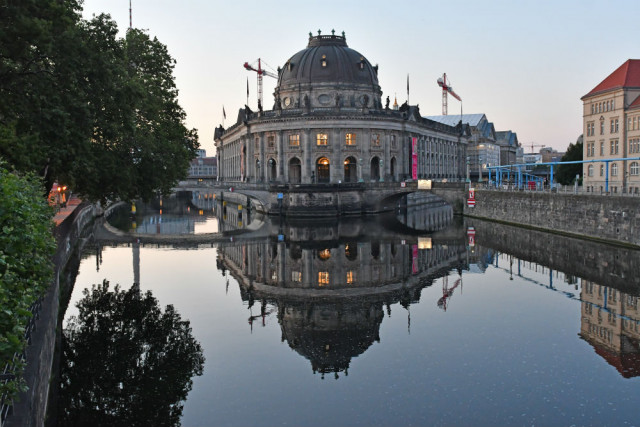
A view of the Bode Museum on Museum Island in Berlin. Photo:DPA
The Museum Island in Berlin’s Mitte district is home to five world famous museums: the Altes Museum, Neues Museum, Old National Gallery, Bode Museum and Pergamon Museum. The island is at the Spreeside site of the Cölln, which was a sister city to Old Berlin (Altberlin) in the 13th century.
The museums were initially intended for the Prussian royals’ private collections but were opened to the public in 1918 after the abdication of the last German Kaiser. Today the site is maintained by Berlin State Museums and the Prussian Cultural Heritage Foundation.
7. Wartburg Castle in Thuringia
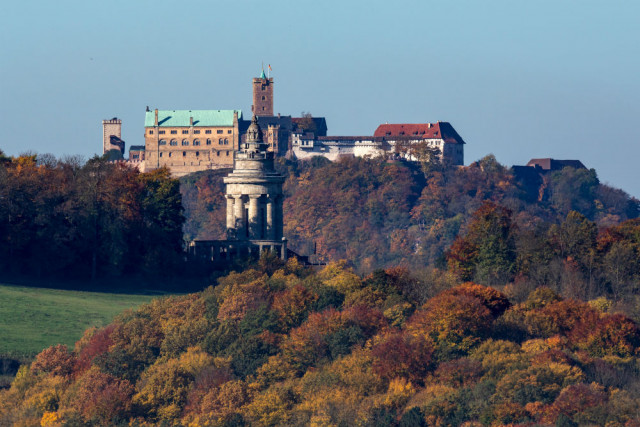
Wartburg Castle. Photo:DPA
Wartburg Castle sits atop a mountain in Thuringia and overlooks the town of Eisenach. It was built in the Middle Ages and is most famous for being the place where Martin Luther translated the Bible into German while in exile.
The castle also inspired Bavarian King Ludwig II to build the fairytale-like castle Neuschwanstein in Schwangau.
Today the castle is the second most visited tourist attraction in the state of Thuringia after the city of Weimar due to its significance in the development of Christianity.
Children can ride donkeys up the hill where visitors can learn more about the history of the castle in the museum which has been incorporated into the structure during renovations. In the 19th century a hotel was built adjacent to the castle for visitors to stay in.
8. The Garden Kingdom of Dessau-Wörlitz
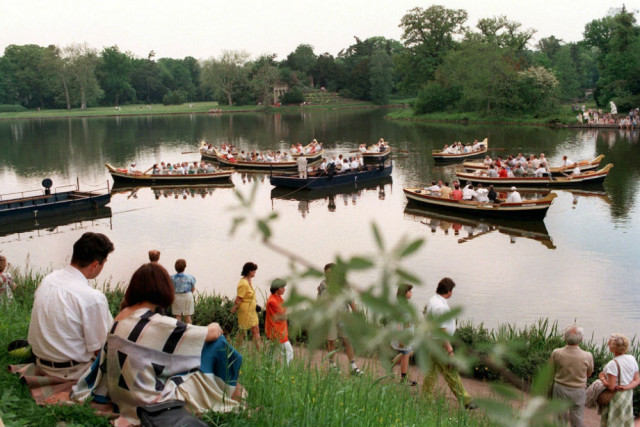
Visitors on the banks of the river Elbe in the Dessau-Görlitz Garden Realm. Photo:DPA
The garden kingdom, or realm, of Dessau Wörlitz was one of the first and largest English parks not just in Germany but in continental Europe.
It was created in the late 18th century and takes up 142 square kilometres of space. The gardens are intersected by the river Elbe which flows east to west through Saxony-Anhalt.
In the 1930s, before the garden kingdom was protected as a heritage site, the area was separated into four distinct sections due to the construction of a railway line and the building of a new Autobahn.
The gardens of Dessau-Wörlitz became a UNESCO World Heritage site in 2000, but the International Council of Monuments and Sites has commented that the “overall structure of the landscape has undergone a good deal of deterioration."
9. Historic centres of Stralsund and Wismar in Mecklenburg-Western Pomerania
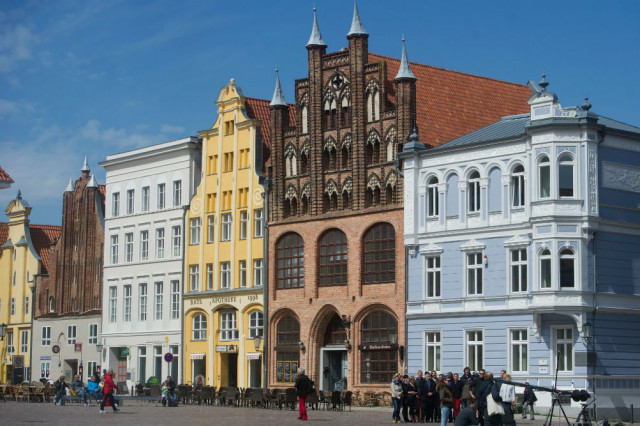
The historic centre of Stralsund. Photo:DPA
The old towns of Stalsund and Wismar in the German state Mecklenburg-Western Pomerania became UNESCO World Heritage sites in 2002. The two German cities situated about 120 kilometres apart have changed hands throughout history more than most places.
Stralsund became part of the Kingdom of Denmark in 1168 but was later fought over by opposing forces during the Thirty Years’ War in the 17th century, whereas Wismar has its origins as a Slavic settlement.The two cities swapped over to Swedish control until Stralsund was occupied by Napoleon Bonaparte’s army.
Stralsund was heavily bombed during the Second World War due to its navy and army bases and when the Red Army occupied the town ten days before the end of the war they discovered that almost half the population had already fled the town.
Under the GDR, Stralsund’s economy was largely centred on its state-owned shipyard, which was predominantly used to build ships for the Soviet Union. Wismar, on the other hand, became East Germany’s largest port after Rostock. It is also known for being the setting of the famous 1922 silent horror film Nosferatu.
Since reunification the historic centres of these two German towns have been thoroughly restored and protected by heritage organizations.
10. Muskau Park
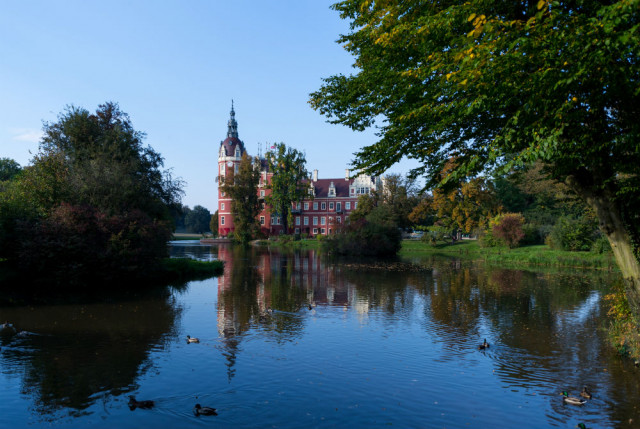
Muskau Park. Photo:DPA
Muskau Park in Saxony is a landscape park in the Upper Lusatia region, which covers area in both Germany and Poland. The park is one of the most famous English gardens in Central Europe built in 1815 around Schloss Muskau. Its 3.5 square kilometres stretches across both sides of the river Neisse which acts as a border between the two countries.
The castle at the park’s centre was destroyed by Soviet forces during the Battle of Berlin at the end of the Second World War and was later rebuilt by the East German administration between 1965 and 1972.
When it became a UNESCO World Heritage site in 2004 the site was proclaimed as an “exemplary example of cross-border cultural collaboration between Poland and Germany”. Since Poland’s entry into the Schengen zone in 2007 visitors to the park can freely wander through and explore both sides of the park without border checks.
Comments
See Also
1. The Palaces and Parks of Potsdam

Sanssouci Palace in Potsdam in autumn. Photo:DPA
The parks and palaces of Brandenburg’s capital have been protected by UNESCO since 1990. Perfect for a day trip from Berlin, Potsdam is home to great examples of the baroque architecture which the Prussian royals enjoyed during the 18th century.
Sanssouci Palace is the resting place of Prussian king Frederick the Great and was his solace away from the busy streets of Berlin. Other sites protected by UNESCO in this charming city are Schloss Glienicke and the Russian settlement just north of the town centre.
Read more about the city of Potsdam here.
2. The old town of Quedlinburg

Quedlinburg old town. Photo:DPA
The church, castle and historic centre of this sleepy town situated north of the Harz mountains of Saxony-Anhalt make up another UNESCO World Heritage site.
The town itself is brimming with medieval history and has been called the “cradle of the German Reich." Back in 922 AD legend has it that King Henry the Fowler was offered the throne of Germany in this very spot.
Quedlinburg’s national significance did not end there though. Under the Nazis, the town’s church and castle became shrines to the party. Heinrich Himmler led a cult-like following of Henry I, who he called the “most German of all German”.
In the shadow of the Harz mountains, the Nazis tried to create a new religion to worship the medieval king, but ultimately failed. The church was closed from 1938 and throughout the war until liberation.
Today the story of this old town is being told to visitors and the historic sites will remain standing and protected by UNESCO for the foreseeable future.

An original Bauhaus site in Dessau. Photo:DPA
In 1919 the city of Weimar in Thuringia gave birth to an architectural movement which spread throughout the world: Bauhaus.
Originally the name of an academy for applied arts, design and architecture in Weimar founded by architect Walter Gropius, affiliate schools were later set up in Dessau and Berlin.
The sites of these schools are now protected by UNESCO who hope to preserve the building movements of the 20th century.
4. Memorials to Martin Luther in Eisleben and Wittenberg

The house where Martin Luther died in Eisleben. Photo:DPA
The towns of Eisleben and Wittenberg in Saxony-Anhalt are home to several memorials to Martin Luther which are preserved by UNESCO. Martin Luther was born in Eisleben in 1483, and also preached his last sermon and died there in 1546.
As far back as the year 1689 town-dwellers took steps to preserve its Luther memorials and became pioneers of “heritage tourism”. Luther’s “birth house” and “death house” are both protected heritage sites in the town.
Luther spent the majority of his life in another Saxony-Anhalt town: Wittenberg. Here the Augustinian monastery where he spent time as a monk and where he then lived with his wife and family is a protected site.
5. Classical Weimar

Schloss Belvedere in Weimar. Photo:DPA
Multiple structures are protected in the city of Weimar in Thuringia which relate to Weimar Classicism. This was a literary and culture movement which lasted from 1772 to 1805 and saw the rise of literary greats Johann Wolfgang von Goethe and Friedrich Schiller.
Buildings that make up the heritage site include the houses of Goethe and Schiller, just a three-minute walk from each other, and Weimar Palace and Schloss Belvedere, a two-story baroque palace on the outskirts of the city.
6. Museum Island in Berlin

A view of the Bode Museum on Museum Island in Berlin. Photo:DPA
The Museum Island in Berlin’s Mitte district is home to five world famous museums: the Altes Museum, Neues Museum, Old National Gallery, Bode Museum and Pergamon Museum. The island is at the Spreeside site of the Cölln, which was a sister city to Old Berlin (Altberlin) in the 13th century.
The museums were initially intended for the Prussian royals’ private collections but were opened to the public in 1918 after the abdication of the last German Kaiser. Today the site is maintained by Berlin State Museums and the Prussian Cultural Heritage Foundation.
7. Wartburg Castle in Thuringia

Wartburg Castle. Photo:DPA
Wartburg Castle sits atop a mountain in Thuringia and overlooks the town of Eisenach. It was built in the Middle Ages and is most famous for being the place where Martin Luther translated the Bible into German while in exile.
The castle also inspired Bavarian King Ludwig II to build the fairytale-like castle Neuschwanstein in Schwangau.
Today the castle is the second most visited tourist attraction in the state of Thuringia after the city of Weimar due to its significance in the development of Christianity.
Children can ride donkeys up the hill where visitors can learn more about the history of the castle in the museum which has been incorporated into the structure during renovations. In the 19th century a hotel was built adjacent to the castle for visitors to stay in.
8. The Garden Kingdom of Dessau-Wörlitz

Visitors on the banks of the river Elbe in the Dessau-Görlitz Garden Realm. Photo:DPA
The garden kingdom, or realm, of Dessau Wörlitz was one of the first and largest English parks not just in Germany but in continental Europe.
It was created in the late 18th century and takes up 142 square kilometres of space. The gardens are intersected by the river Elbe which flows east to west through Saxony-Anhalt.
In the 1930s, before the garden kingdom was protected as a heritage site, the area was separated into four distinct sections due to the construction of a railway line and the building of a new Autobahn.
The gardens of Dessau-Wörlitz became a UNESCO World Heritage site in 2000, but the International Council of Monuments and Sites has commented that the “overall structure of the landscape has undergone a good deal of deterioration."
9. Historic centres of Stralsund and Wismar in Mecklenburg-Western Pomerania

The historic centre of Stralsund. Photo:DPA
The old towns of Stalsund and Wismar in the German state Mecklenburg-Western Pomerania became UNESCO World Heritage sites in 2002. The two German cities situated about 120 kilometres apart have changed hands throughout history more than most places.
Stralsund became part of the Kingdom of Denmark in 1168 but was later fought over by opposing forces during the Thirty Years’ War in the 17th century, whereas Wismar has its origins as a Slavic settlement.The two cities swapped over to Swedish control until Stralsund was occupied by Napoleon Bonaparte’s army.
Stralsund was heavily bombed during the Second World War due to its navy and army bases and when the Red Army occupied the town ten days before the end of the war they discovered that almost half the population had already fled the town.
Under the GDR, Stralsund’s economy was largely centred on its state-owned shipyard, which was predominantly used to build ships for the Soviet Union. Wismar, on the other hand, became East Germany’s largest port after Rostock. It is also known for being the setting of the famous 1922 silent horror film Nosferatu.
Since reunification the historic centres of these two German towns have been thoroughly restored and protected by heritage organizations.
10. Muskau Park

Muskau Park. Photo:DPA
Muskau Park in Saxony is a landscape park in the Upper Lusatia region, which covers area in both Germany and Poland. The park is one of the most famous English gardens in Central Europe built in 1815 around Schloss Muskau. Its 3.5 square kilometres stretches across both sides of the river Neisse which acts as a border between the two countries.
The castle at the park’s centre was destroyed by Soviet forces during the Battle of Berlin at the end of the Second World War and was later rebuilt by the East German administration between 1965 and 1972.
When it became a UNESCO World Heritage site in 2004 the site was proclaimed as an “exemplary example of cross-border cultural collaboration between Poland and Germany”. Since Poland’s entry into the Schengen zone in 2007 visitors to the park can freely wander through and explore both sides of the park without border checks.
Join the conversation in our comments section below. Share your own views and experience and if you have a question or suggestion for our journalists then email us at [email protected].
Please keep comments civil, constructive and on topic – and make sure to read our terms of use before getting involved.
Please log in here to leave a comment.